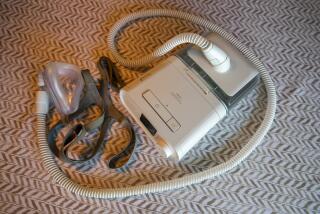Hey, parents, not yet worried about medical devices or head lice? Keep reading
- Share via
Parents who have been fretting about their kids’ junk food consumption, lack of exercise, questionable oral hygiene, astonishing infection risks, poor study habits or excessive social networking need to make way for two more worries -- child-threatening medical devices and drug-resistant lice.
The current issue of the journal Pediatrics features these gems: “Emergency Department Visits for Medical Device-Associated Adverse Events Among Children” and “Clinical Report -- Head Lice.” And they’re a goldmine of fuel for angst.
In the medical-device study, the researchers were attempting to assess the nature and scope of problems caused by medical devices. They write: “This should help to identify medical devices that may pose increased risks and patient subgroups that may benefit from certain health interventions.”
They succeeded. The types of injuries vary by age and gender, the study found, but it’s safe to say parents need to better monitor kids’ contact-lens habits. The lenses accounted for 23% of medical device-related injuries; hypodermic needles accounted for 8%.
The researchers also warned of the need to keep an eye on wheelchairs, scooters, braces, crutches and the like -- and the kids who must rely on them.
Here’s the full ER-visits-and-medical-device study.
As for the head-lice report, the authors note that yes, lice have developed resistance to drug treatments, but sometimes, parents just don’t do a good job of de-lousing their kids. Tsk, tsk.
Here’s the full head-lice report.
So, parents, worry away -- and then stop. The reports may seem alarming on the surface -- or as portrayed in headlines across print and Web -- but they’re also fully and readily available to one and all (thanks, Pediatrics) and, they provide much-needed warnings, context and advice.
The medical device study points out those devices (and kids) in need of additional monitoring, which is especially notable considering kids’ increasing use of contacts. And the head-lice report explains the various treatments -- specific pediculicides, scabicides, oral drugs, natural products, suffocating agents, a desiccating machine and more -- and their effectiveness. It also notes that head-to-head transmission is the big problem (so don’t skimp on protective head gear).
As such, the reports are both extremely valuable and extremely reassuring -- much more so than some blog post about musings from the health world.
-- Tami Dennis




